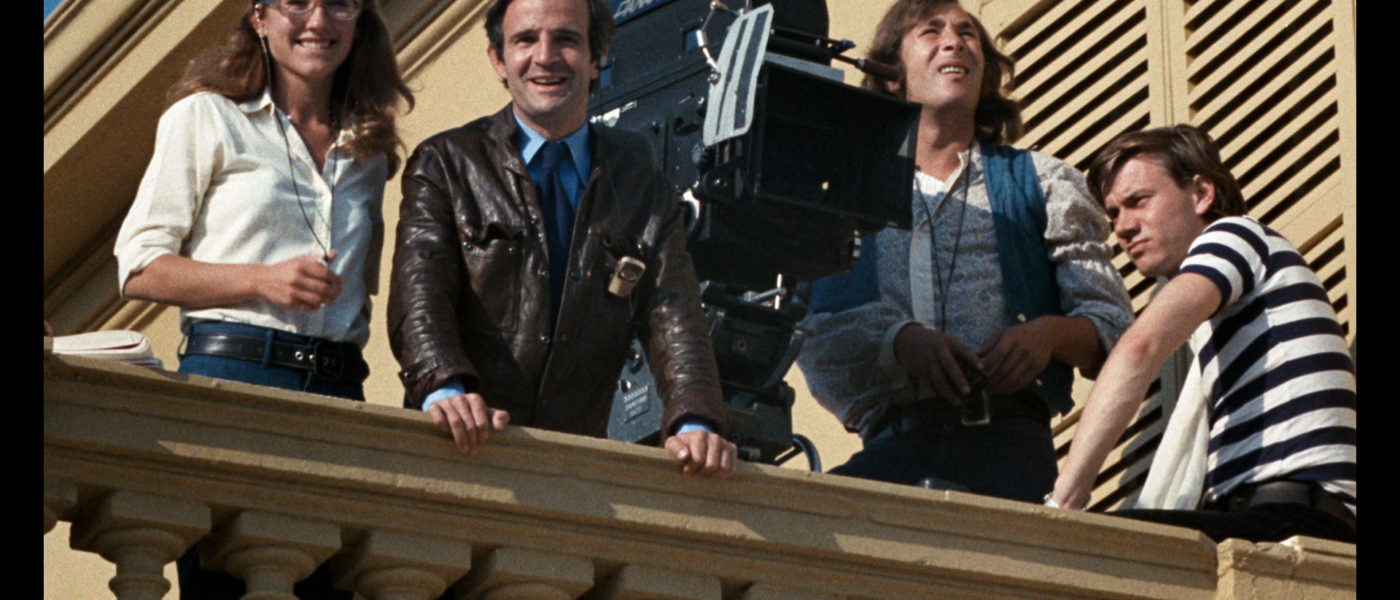When the Movies Turn Their Cameras Upon Themselves…
We all know it. Hollywood is perhaps the most narcissistic industry ever created by narcissistic man. As we’ll be seeing again in just a few days, this industry loves to give itself awards, and it loves to make movies about itself, and it loves to occasionally give itself awards for the movies it makes about itself, a criminal case of the tail schwagging the dog.
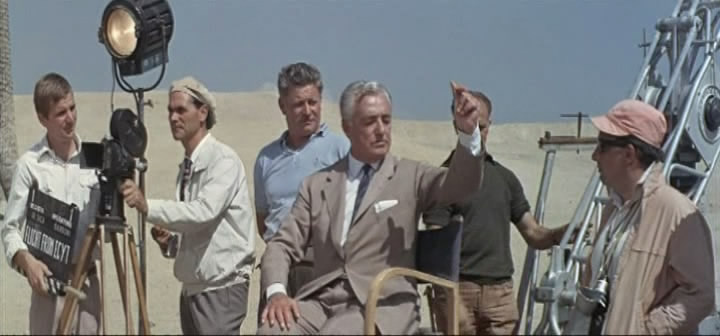
Vittorio De Sica directs the movie within the movie in AFTER THE FOX (1966, dir. Vittorio De Sica)
It’s a factory so fat on self-regard, any navel-gazing requires a system of well-positioned mirrors. It’s almost as if it knows it’s the greatest single art form of all time, a truth that makes it sort of okay with us, right? Because when all the moving parts of that massive, solipsistic, movie-making system work perfectly, we get a product that can take us to another place, show us a better way, reveal a truth of life, or simply imbue us with the satisfaction that comes from a couple of hours entertainingly spent. And if the hero of that well-told story happens to be a screenwriter, a director, an actor, or a whole frickin’ film crew, we’re happy to go along for the ride – because it’s ultimately about us and our pleasure and what we get out of it, securing the full-circle narcissism of the box office transaction.
It’s a factory so fat on self-regard, any navel-gazing requires a system of well-positioned mirrors. It’s almost as if it knows it’s the greatest single art form of all time…
In the spirit of that transaction, we at ZekeFilm aren’t above admitting that our love for film is so deep and thorough, we’ll actually seek out movies that talk about themselves, and then give them the bonus satisfaction of writing about them too. Here, today, we float some titles we’ve yet to see that in one way or another tell a story about storytellers telling stories about themselves.
– Robert Hornak
*****
Sunset Boulevard
(1950, Paramount Pictures, dir. Billy Wilder)
by Krystal Lyon
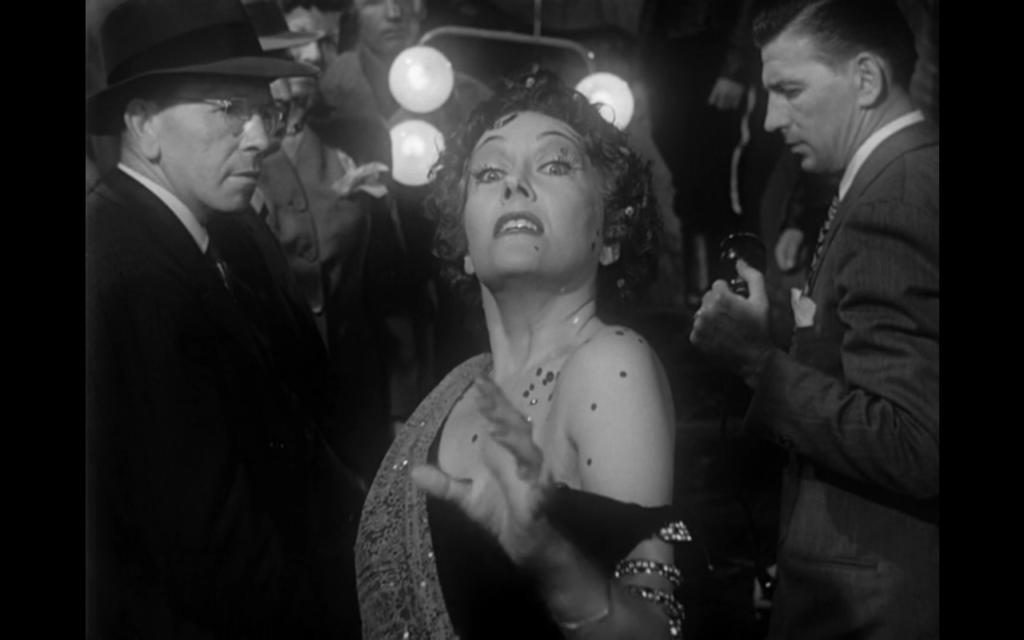
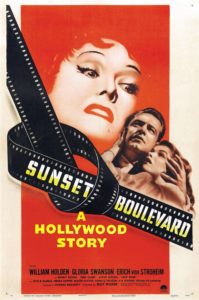 There are moments when I realize how little I know about film. Some of those moments include crying at the end of Charlie Chaplin’s The Kid, laughing at the clever dialogue in The Maltese Falcon, and feeling awestruck throughout the entirety of The Passion Of Joan Of Arc. I can now add the immense gut-punch of Sunset Boulevard to that list. What a tale! What a horrific Hollywood ghost story! What a parable for our entertainment driven, self-deceived Facebook world! Number 16 on AFI’s Top 100 had been in my Netflix queue for sometime and this month’s Film Admission was the perfect opportunity to spend some quality time with a few Hollywood legends. Directed by Billy Wilder (Some Like It Hot), staring William Holden (The Bridge Over The River Kwai) and Gloria Swanson (silent film goddess in Queen Kelly) with cameos from Cecil B. DeMille, (The Ten Commandments) Buster Keaton, (The General) and H.B. Warner (It’s A Wonderful Life) Sunset Boulevard is full of one-liners that we all know. From “I am big, it’s the pictures that got small.” to “All right, Mr. DeMille, I’m ready for my close-up.” But what is this cynical Hollywood tale all about?
There are moments when I realize how little I know about film. Some of those moments include crying at the end of Charlie Chaplin’s The Kid, laughing at the clever dialogue in The Maltese Falcon, and feeling awestruck throughout the entirety of The Passion Of Joan Of Arc. I can now add the immense gut-punch of Sunset Boulevard to that list. What a tale! What a horrific Hollywood ghost story! What a parable for our entertainment driven, self-deceived Facebook world! Number 16 on AFI’s Top 100 had been in my Netflix queue for sometime and this month’s Film Admission was the perfect opportunity to spend some quality time with a few Hollywood legends. Directed by Billy Wilder (Some Like It Hot), staring William Holden (The Bridge Over The River Kwai) and Gloria Swanson (silent film goddess in Queen Kelly) with cameos from Cecil B. DeMille, (The Ten Commandments) Buster Keaton, (The General) and H.B. Warner (It’s A Wonderful Life) Sunset Boulevard is full of one-liners that we all know. From “I am big, it’s the pictures that got small.” to “All right, Mr. DeMille, I’m ready for my close-up.” But what is this cynical Hollywood tale all about?
Sunset Boulevard is your classic Film Noir. Sharp shadows and lighting set a menacing tone and a femme fatale unexpectedly ensnares a new lover with her mesmerizing past and comfortable digs. Aging silent-era star Norma Desmond (Swanson) is living alone in a “Grey Garden-esque” mansion. We meet her after her pet chimpanzee has died. B-List screenwriter Joe Gillis (Holden) is penny-less and on the run from debt collectors when an unfortunate flat tire leaves him stranded at Desmond’s front door. She lures him in with a free place to stay, a job rewriting Oscar Wilde’s Salome and sparkly things like platinum watches and gold cigarette cases. Slowly he is devoured by her jealousy and detachment from reality. Wilder showed the dark cannibalistic side of Hollywood. He wanted us, “those wonderful people out there in the dark” to look past the shiny Hollywood illusion, and see the rotting monsters that fame and greed create.
What’s fascinating about Sunset Boulevard is how closely the film resembles the lives of the actors in the movie. Gloria Swanson was a 50 year-old star making the transition from silent films to “Talkies”. They used actual footage from her silent film Queen Kelly in one of the scenes. In Sunset Boulevard the only love you see comes from Norma’s once husband, now butler, Max von Mayerling, played by Erich von Stroheim who in real life directed Swanson in Queen Kelly! It’s so intertwined it boggles my brain! Buster Keaton, Anna Q. Nilsson and H.B. Warner play themselves as the “Waxworks”, Norma’s silent-era friends that are just as forgotten as she is. And Cecil B. DeMille is shown on the set of his hit Samson And Delilah, the one place where Norma is remembered and cherished. What honesty and vulnerability from Wilder and crew! That vulnerability is the gut-punch to the Hollywood that we all worship and that was Wilder’s objective. Sunset Boulevard, Wilder’s poison pen letter to La La Land.
Singin’ in the Rain
(1952, MGM, dir. Stanley Donen, Gene Kelly)
by Robert Hornak
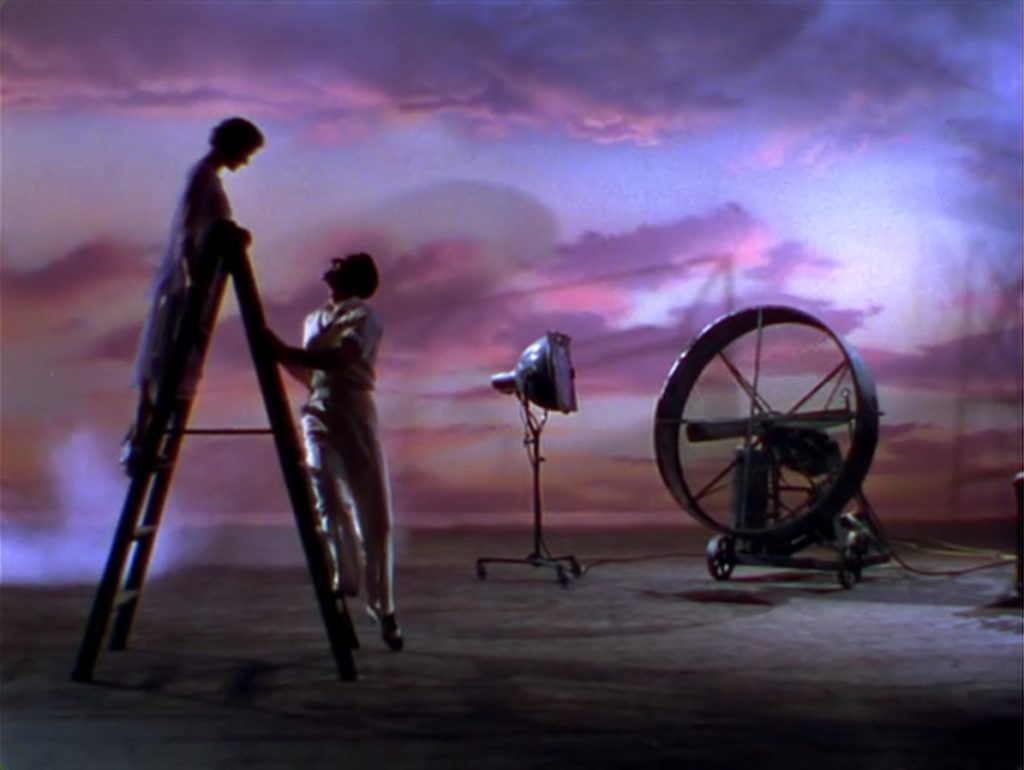
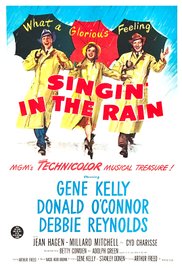 All I can ask is: how many days did Gene Kelly have to spend completely soaked to shoot the movie’s signature dance sequence? There’s a lot of water, and a lot of camera setups, and a lot of perfectionism animating co-director Kelly’s specific genius, so I imagine a lot of takes. I’ve watched the scene many times in life – it’s as constant as the rain – but I’ve never seen it in the flow of the movie, and who knew that something with such a thick crust of “seen it!” could actually seem new, rich, even galvanizing. There’s only a few musicals I think I’d sit through on repeat. But I have to declare, I don’t think I’ve been more thoroughly entertained by a movie in years.
All I can ask is: how many days did Gene Kelly have to spend completely soaked to shoot the movie’s signature dance sequence? There’s a lot of water, and a lot of camera setups, and a lot of perfectionism animating co-director Kelly’s specific genius, so I imagine a lot of takes. I’ve watched the scene many times in life – it’s as constant as the rain – but I’ve never seen it in the flow of the movie, and who knew that something with such a thick crust of “seen it!” could actually seem new, rich, even galvanizing. There’s only a few musicals I think I’d sit through on repeat. But I have to declare, I don’t think I’ve been more thoroughly entertained by a movie in years.
My way into this one is that it’s unpacking one of the most fascinating dots on the Hollywood timeline: the moment when sound technology overtook the process, arguably robbing us of the deep simplicity of stylized pantomime and replacing it with cheap, tinny vocabulary. The movie parodies the broadness of the old style even as it celebrates it by mocking the demands of the new way. Great case in point: Don (Kelly) and Cosmo (Donald O’Connor) go all “Moses Supposes” in their now-perfunctory diction class like a couple of schoolboys torturing their junior high detention monitor, whom they dismantle with the gusto of Groucho at the opera as they throw diction and dialogue to the side and opt to talk with their dancing toeses. The tectonic quake of the silent-sound transition generates most of the movie’s emotional drama as every decision is fueled by a mistrust for the business – the roiling of anxious anger regarding the unpredictable shifting of studio process, fame, money, self-respect – while the studio itself perpetuates a public trust in the allure of artifice to ultimately cinch up entire careers.
Honestly, one of the more appealing facets of the movie to me is its lack of shame in highlighting the cynical reliance on artifice to fool an audience into a good time, from the inflation of Don and Cosmo’s humble performing history into a fan-mag-friendly tall tale, to the sham, studio-sanctioned romance between Don and Lina, to the revelation of deepening mania and desperation at the heart of the funny ode to wind-up funniness “Make ‘Em Laugh”, to the deeply dysfunctional way Don expresses his love for Cathy (Debbie Reynolds) by the only means he says an actor can: with the “proper setting” of a manufactured starry night on an empty soundstage, and to the fact that the movie is itself merely a rehashed flipbook of old Arthur Freed/MGM songs the audience already knew well. And the joke’s on us, because while the movie keeps telling us movies are fake, and that the characters are merely vehicles for a reflexive exorcising of artificial pretense, it’s in the costume of a movie so well-made that the very artifice it’s unmasking has sucker-punched us with glitz, glamour, charm, and relentless life. The fact that the movie ends on a shot of Don and Cathy kissing in front of a billboard for their next movie, titled of course Singin’ in the Rain, at once sending the movie into a vicious meta-loop and satisfying the romantic promise of the story, tells us all we need to know about what we don’t mind our fake stories feeding us.
Argo
(2012, Warner Brothers, dir. Ben Affleck)
by Taylor Blake
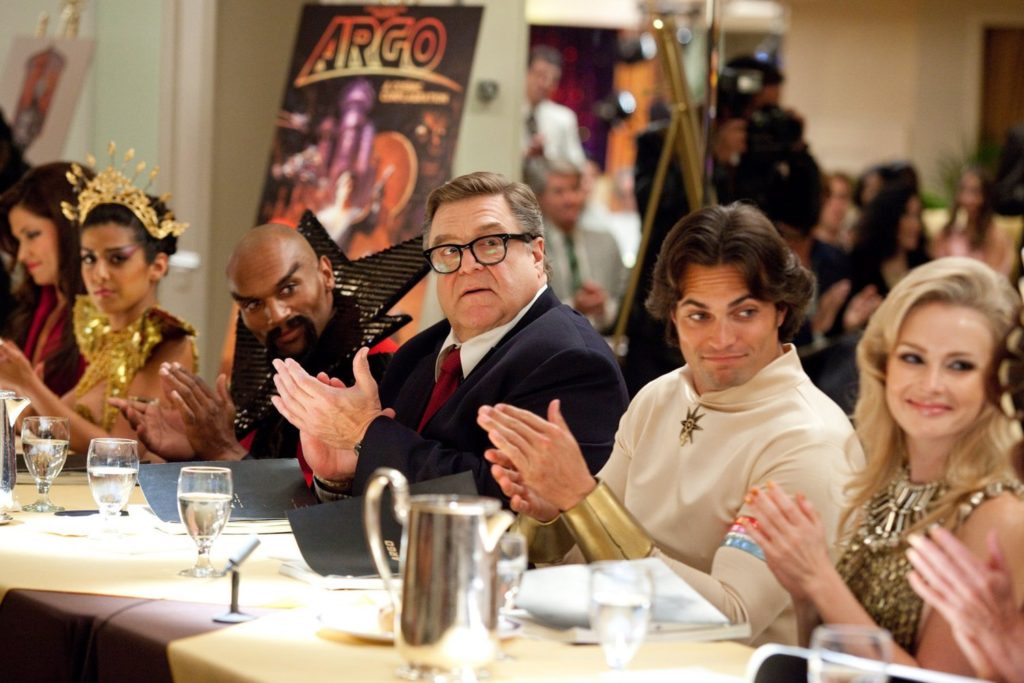
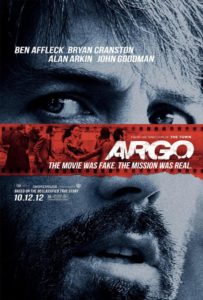 “Argo f— yourself.”
“Argo f— yourself.”
I’m not normally one for profanity, but that? That clever play on words weirdly delighted me every one of the umpteen times the characters insulted each other in Argo (in jest or not so much). Better yet, it’s an encapsulation of the spirit of the movie, a movie about a ridiculous fake movie used to distract from a real, non-movie crisis.
During the Iranian Hostage Crisis (which kicked off in December 1979), six U.S. Embassy employees escape the building before Iranian revolutionaries take it captive for 444 days. The escapees find refuge at the Canadian Embassy but can’t find a way to leave the country without capture. At a loss for how to rescue them, the CIA falls back on its last resort: Making the fugitives appear to be a Canadian film crew scouting locations in Iran. Tony Mendez (Ben Affleck) will lead them out of the country after he, a makeup artist (John Goodman), and an aging producer (Alan Arkin) convince Hollywood they’re making a real picture.
Argo is a plot so bizarre it could only be true, so it was only a matter of time before the silver screen came calling. By nature of its content, it serves as political commentary on foreign relations between the East and the West, but the film provides more commentary on what director Ben Affleck and Co. know best: Hollywood.
Planning a covert CIA mission is a little like making a movie. The hardest part comes first: The pitch. Mendez spends a lot of time convincing the intelligence community (aka the financiers) to put up the money and resources for this project. Once that’s secured, planning and pre-production require tons of energy, but there’s only a short amount of time available to them. Mendez recruits a crew to create props and settings to make the story believable. The undercover agents and refugees must learn their characters and lines. And once everyone arrives on set, delays and setbacks make it seem impossible to finish the work by the deadline.
Of course, the production of the fake Argo’s splashy table read and formal Variety press release contrast quite a bit with the political unrest and trauma in the Middle East. While men and women suffer on behalf of their country or revolution, the film industry continues in its excess, fleetingness, and distraction. Argo argues that the greed of the West got them into this mess, and ironically, one of the professions most associated with greed will help them out of it. How bizarre is that? Enough to wave your hand, roll your eyes, and say, “Argo f— yourself.”
Hearts of the West
(1975, Metro-Goldwyn-Mayer, dir: Howard Zieff)
by Dean Treadway
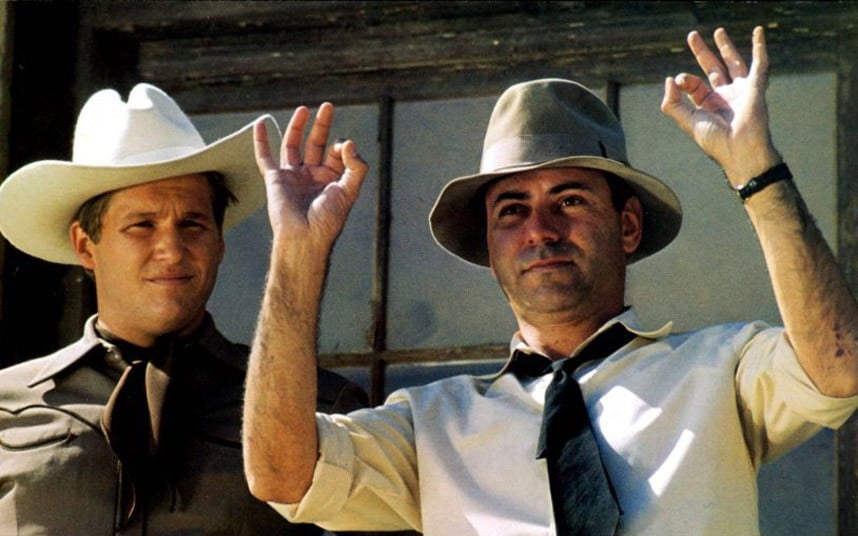
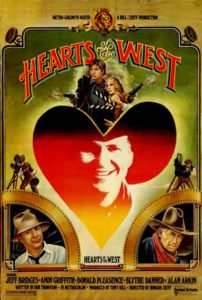 Faced with the challenge of seeing of film about filmmaking that I hadn’t yet seen, I was particularly flummoxed. It felt like I’d watched them all (I wished I could see, for the first time, movies like 8 ½—eternally, the most insightful movie about moviemaking ever—as well as Day for Night, All That Jazz, Barton Fink, American Movie, Sunset Blvd., The Artist, S.O.B., Singin’ in the Rain, Real Life, Ed Wood, The Stunt Man, Stardust Memories, Tropic Thunder, Silent Movie, Sullivan’s Travels, Tristram Shandy: A Cock and Bull Story, Living in Oblivion, Visions of Light, Hearts of Darkness: A Filmmaker’s Apocalypse, Boogie Nights, Burden of Dreams, Hugo, Son of Rambow, Man Bites Dog, Peeping Tom, The Cameraman, The Player, David Holzman’s Diary, White Hunter Black Heart, Sherman’s March, Time Indefinite, Strangers’ Kiss, The Aviator, Man with a Movie Camera, Be Kind Rewind, Forgotten Silver, The Bad and the Beautiful, Mulholland Dr., and The Day of the Locust).
Faced with the challenge of seeing of film about filmmaking that I hadn’t yet seen, I was particularly flummoxed. It felt like I’d watched them all (I wished I could see, for the first time, movies like 8 ½—eternally, the most insightful movie about moviemaking ever—as well as Day for Night, All That Jazz, Barton Fink, American Movie, Sunset Blvd., The Artist, S.O.B., Singin’ in the Rain, Real Life, Ed Wood, The Stunt Man, Stardust Memories, Tropic Thunder, Silent Movie, Sullivan’s Travels, Tristram Shandy: A Cock and Bull Story, Living in Oblivion, Visions of Light, Hearts of Darkness: A Filmmaker’s Apocalypse, Boogie Nights, Burden of Dreams, Hugo, Son of Rambow, Man Bites Dog, Peeping Tom, The Cameraman, The Player, David Holzman’s Diary, White Hunter Black Heart, Sherman’s March, Time Indefinite, Strangers’ Kiss, The Aviator, Man with a Movie Camera, Be Kind Rewind, Forgotten Silver, The Bad and the Beautiful, Mulholland Dr., and The Day of the Locust).
The only appropriate works I could think of that I hadn’t yet watched were Jean Luc-Godard’s Contempt, William Greaves’ experimental Symbiopsychotaxiplasm, Vincent Minnelli’s Two Weeks in Another Town, H.C. Potter’s ’40s musical Hellzapoppin’, and the more recent Raiders! The Story of the Greatest Fan Film Ever Made. But, in the end, I chose Howard Zieff’s 1975 comedy Hearts of the West, simply because it seemed like it’d be the most easily watchable of the bunch.
And that was a correct choice. Hearts of the West was, in 1975, a well-reviewed comedy, but it was also a tremendous box office disappointment—it was just too old-fashioned for then-adventurous filmgoers looking for something different, though there was a lot of active nostalgia for the ’30s and ’40s circa 1975. Seen today, Zieff’s film, written by Northern Exposure head writer Rob Thompson, is sweetly charming most of the way through, though some elements are ultra-irritating, chief among them the embarrassingly wacky score by Ken Lauber. However, the script is strong, and the cast is even more impressive; because of both, the laughs are light but steady.
Hearts of the West marks Jeff Bridges’ shift from being the son of a movie star to having movie star status himself. He plays Lewis Tater, a midwestern Western nut who answers his mocking brothers by enrolling in a university that promises to teach him how to write a successful movie. This leads him into a skirmish with the ill-mannered masterminds behind this conjob of a school, led by Richard B. Shull and the menacing Anthony James. Their appearance in this feather-light film bring it down a notch—anytime they saunter in, our interest drops because in comedies, we want laughs, not plot points. And these guys ain’t funny.
Meanwhile. the presence of a vivacious Bridges gooses things up considerably. His fascination for the making of westerns has him literally stumbling into a spot as a stuntman, where he connects with a team of more connected players, including Andy Griffith (as an aged daredevil whose seen better times; the moments where Griffith is surrounded by his grizzled band of fellow horsemen are among the film’s best). Hearts of the West boasts a wondrous array of ’70s-era character actors, leaving one aghast at how many times one crows “Oh, I recognize that guy!” I mean, this movie sports lavish moments from, among many others, Dub Taylor (as a gruff hotelier); Marie Windsor (somehow looking better than she did in Kubrick’s The Killing); nasty Blazing Saddles heavy Burton Gilliam and western mainstay Matt Clark as smart-mouthed stuntmen; The Godfather‘s Alex Rocco as a fey assistant director; Hitchcock veteran Frank Cady (Green Acres‘ Sam Drucker) as Bridges’ father; gentle Candice Azzara (Dom Deluise’s love interest in Fatso) as a waitress who has a crush on Bridges; Blythe Danner, very much resembling her daughter Gwenyth Paltrow, as the gloriously enticing office assistant; and the always patently strange Donald Pleasence as the studio’s oddball figurehead.
But it’s Alan Arkin that really captures our attention as the director of the horse opera that Bridges has bumbled his way onto. Every time the screeching, irritated Arkin crashes the scene, we’re totally invested into the difficulties of making even a low-rent movie set run smoothly (it’s always fun to see Arkin come to the end of his emotional tether, and here his character has an extra layer of Hollywood cynicism as spice). Hearts of the West is, by no means, the most original movie about moviemaking out there–it’s basic boy-meets-girl stuff–but it’s charming nonetheless, and deserves the attention of the most ardent movie fans, if only to witness Arkin’s hilarious mania and Bridges’ nimble beginnings as a leading man. It’s available to see through Amazon Prime and Warner Brothers Archives.
Son of Rambow
(2007, Hammer & Tongs, dir. Garth Jennings)
by Jim Tudor
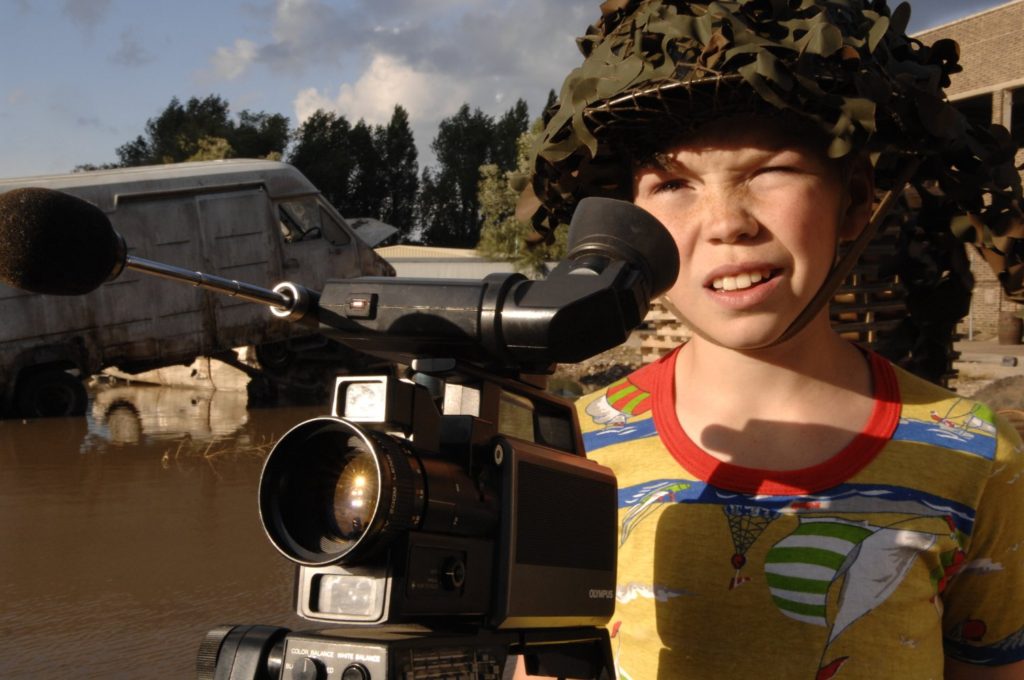
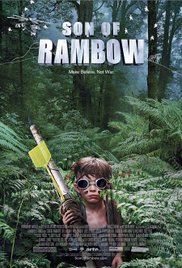 As far as movies that are transparently influenced by the unmistakable aesthetic of Wes Anderson, director Garth Jennings’ Son of Rambow is a pretty darn good one. Yet, that’s exactly it’s Achilles heel. After a while, the madcap rough n’ tumble misadventures of a couple of boys working to shoot their own makeshift Rambo film becomes distractingly visually derivative of such expertly measured quirky Anderson fare as Rushmore and The Royal Tenenbaums. Such intentionally somehow-stilted symmetrical framing amid an unapologetic boyish foray – wildly death-defying stunts played for their video camera – detract from the resonant bottom line of Rambow, which is the unlikely friendship between two grade school boys from very different backgrounds, but each with father issues of his own.
As far as movies that are transparently influenced by the unmistakable aesthetic of Wes Anderson, director Garth Jennings’ Son of Rambow is a pretty darn good one. Yet, that’s exactly it’s Achilles heel. After a while, the madcap rough n’ tumble misadventures of a couple of boys working to shoot their own makeshift Rambo film becomes distractingly visually derivative of such expertly measured quirky Anderson fare as Rushmore and The Royal Tenenbaums. Such intentionally somehow-stilted symmetrical framing amid an unapologetic boyish foray – wildly death-defying stunts played for their video camera – detract from the resonant bottom line of Rambow, which is the unlikely friendship between two grade school boys from very different backgrounds, but each with father issues of his own.
Bill Milner plays Will, a well meaning culturally sheltered kid with a religiously restrictive mother. Will Poulter is Lee, a manipulative school bully from a wealthy but abusively neglectful household. After Lee locks Will in a cage in his garage, forcing him to watch his own VHS pirated version of First Blood (Will’s first ever movie), they bond over filmmaking. What’s going on is obvious, but it’s all so youthfully charming. When fatherless Will declares his starring role in Lee’s chaotic passion project/video production to be “the son of Rambow”, his wish fulfillment for an awesome super-dad is as endearing as it is heartbreaking. Then, it turns cartoonishly hilarious as the sadistic Lee runs Will through a battery of Roadrunner-level on-camera stunts. That Will happily goes along with all of it, emerging unscathed and ready for more, makes him the most wide-eyed innocent of Wile E. Coyotes.
The early 1980s setting is fluid at best, but what Garth Jennings (Sing) does so well here is the navigation of boyhood bonding through communal filmmaking, both the positives of that and the negatives. And that aspect, dare I say, is as timeless as the medium they’re operating in.
I liked Son of Rambow, even if it fell short of the decade of accolades I’ve been hearing. (How is this already ten years old?!?) It may be surprising, but of all the Film Admissions I’ve ever admitted to, this movie is one of the most asked about. Perhaps it’s due to my own history as a one-time boy filmmaker of hopelessly elaborate and derivative action pictures. Or, maybe people just knew I’d dig it. I do, thank you very much. But really, Son of Rambow shows us how the unlikeliest of friendships can stem from the most glaring of influences. Namely, Rambo by way of Wes Anderson. Which is not nearly as disparate as it might sound.
The Life Aquatic with Steve Zissou
(2004, Touchstone Pictures, dir. Wes Anderson)
by Erik Yates
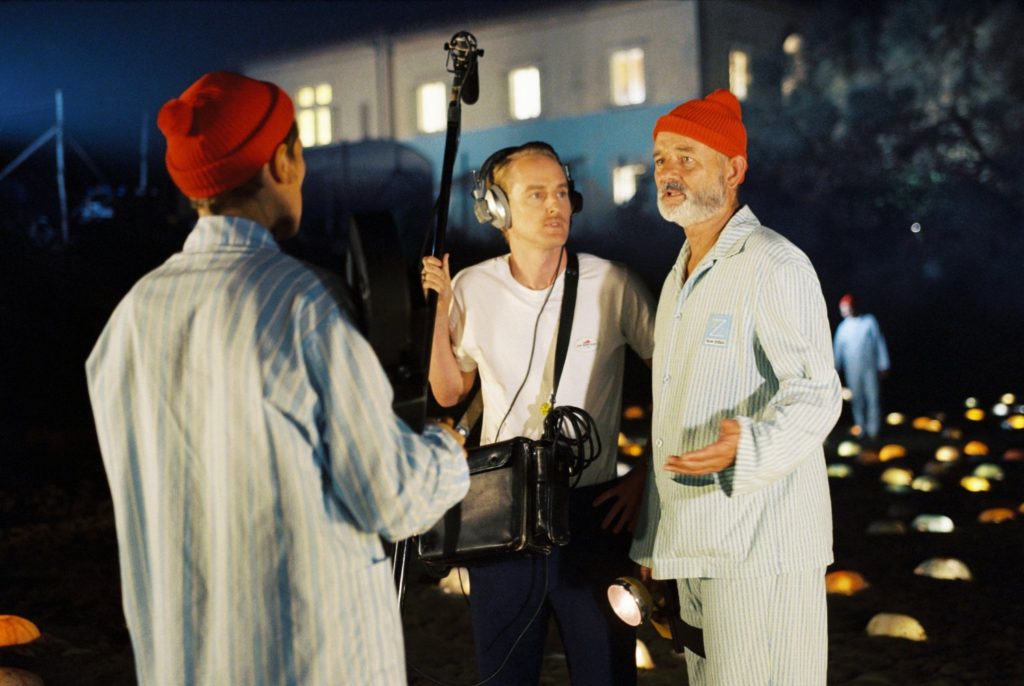
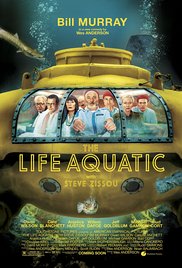 While there are many films about making films, none will ever quite have the feel and quirkiness of a Wes Anderson film. Simply said, The Life Aquatic with Steve Zissou was a wonderful experience and another hole in my Wes Anderson film discography has finally been filled. Reoccurring actors pop up in the cast list that seem to constantly populate all Wes Anderson films. Bill Murray, Owen Wilson, Cate Blanchett, Willem Dafoe, Jeff Goldblum, along with Anjelica Huston, Michael Gambon, and Noah Taylor, all add to the charm of this Jacques Cousteau tribute (parody?). Bill Murray is Steve Zissou, a Cousteau-like sea explorer who has fallen on hard times, especially after his friend and partner was eaten in his last documentary by an elusive Jaguar-shark.
While there are many films about making films, none will ever quite have the feel and quirkiness of a Wes Anderson film. Simply said, The Life Aquatic with Steve Zissou was a wonderful experience and another hole in my Wes Anderson film discography has finally been filled. Reoccurring actors pop up in the cast list that seem to constantly populate all Wes Anderson films. Bill Murray, Owen Wilson, Cate Blanchett, Willem Dafoe, Jeff Goldblum, along with Anjelica Huston, Michael Gambon, and Noah Taylor, all add to the charm of this Jacques Cousteau tribute (parody?). Bill Murray is Steve Zissou, a Cousteau-like sea explorer who has fallen on hard times, especially after his friend and partner was eaten in his last documentary by an elusive Jaguar-shark.
Zissou sets off to complete the documentary where he will hunt this never-before-heard-of breed of shark, and get revenge for the dastardly deed this shark committed. He will do this all while being confronted with possibly being the father of the just arrived Ned (Wilson), being left by his wife (Huston), and being targeted by both a dour reporter with an ax-to-grind (Blanchett), and his wife’s first husband, who is also his main competitor in sea exploration (Goldblum). Dafoe, as Zissou’s right hand man Klaus, is great in every scene. What makes this film even more enjoyable is that it is written by Anderson, along with Noah Baumbach, who has become a great quirky director in his own right with such films as Frances Ha, While We’re Young, and Mistress America. The use of stop-motion animation, and the various colors can be seen in a more realized extent in the more recent film The Grand Budapest Hotel. Having watched the Criterion Collection release of this film only enhanced the experience with its many extras. While this may not be the most accessible of Anderson’s films for those who have never experienced his charm and brilliance, it is a fun one nonetheless.
*****
Video Bonus!
Enjoy Wes Anderson’s excellent and funny American Express commercial in its extended form! This single-shot marvel is as fit as a fiddle and a crackling tribute to François Truffaut’s seminal film about filmmaking, 1973’s Day for Night:
[youtube https://www.youtube.com/watch?v=JOhDo2ZoOig]


